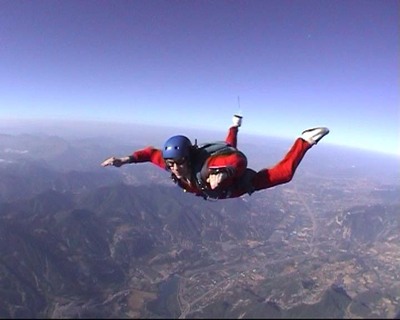 The Arts
The Arts  The Arts
The Arts  Crime
Crime 10 Fascinating Facts about Rikers Island
 Pop Culture
Pop Culture 10 Things You Might Not Know about Dracula
 Weird Stuff
Weird Stuff 10 Everyday Activities That Were Once Considered Illegal
 History
History Ten of History’s Hidden Secrets: Stories 99% Don’t Know About
 Movies and TV
Movies and TV 10 Actors Who Infamously Stormed Off Set While Filming
 Food
Food 10 Foods That Have Alleged Occult Powers
 Sport
Sport 10 Lesser-Known Multi-Sport Alternatives to the Olympics
 Humans
Humans 10 Real Life Versions of Famous Superheroes
 Gaming
Gaming 10 Overused Game Villains
 The Arts
The Arts 10 Masterpieces Plucked from the Artist’s Subconscious
 Crime
Crime 10 Fascinating Facts about Rikers Island
 Pop Culture
Pop Culture 10 Things You Might Not Know about Dracula
Who's Behind Listverse?

Jamie Frater
Head Editor
Jamie founded Listverse due to an insatiable desire to share fascinating, obscure, and bizarre facts. He has been a guest speaker on numerous national radio and television stations and is a five time published author.
More About Us Weird Stuff
Weird Stuff 10 Everyday Activities That Were Once Considered Illegal
 History
History Ten of History’s Hidden Secrets: Stories 99% Don’t Know About
 Movies and TV
Movies and TV 10 Actors Who Infamously Stormed Off Set While Filming
 Food
Food 10 Foods That Have Alleged Occult Powers
 Sport
Sport 10 Lesser-Known Multi-Sport Alternatives to the Olympics
 Humans
Humans 10 Real Life Versions of Famous Superheroes
 Gaming
Gaming 10 Overused Game Villains
Top 10 Fascinating Skydiving Myths
Skydiving is the single most exciting sport there is. Nothing even comes close to the exhilaration you feel when floating on a cushion of air, and flying your canopy safely to the ground. It’s also very misunderstood, and filled with many common fallacies and misconceptions that keep most people from trying this beautiful sport. It’s heavily regulated by national organizations and in comparison to past decades and studying statistics, it’s surprisingly safe! To participate in it regularly, you’re required to obtain sufficient training and a license. It can be a long, expensive process to get your license, but once you do, the feeling of accomplishment is like no other. I highly suggest you try it at least once in your life.
Skydiving Myth: Skydivers pull a rip cord
Actually, rip cords pretty much went out with the round chute back in the early 1980’s. Skydivers using modern day “rigs” (the entire contraption of harness, container and canopies), throw out a pilot chute which is tucked into a pocket on the bottom of the container, just above your butt. The pilot chute is a small parachute attached to a “bridle” which is attached to the main chute. As the pilot chute is deployed, it catches the wind and pulls the closing pin which releases the packed main chute, pulling it from the container, so it will inflate… we hope. You can find a more detailed description of this process here.
There are some dropzones who still use rip-cord gear when teaching their students. Once they’re properly trained however, they graduate to the common bottom of container design. A reserve deployment does use a rip cord to activate the chute, but this is an entirely different design and we hope we never have to pull that handle.
Skydiving Myth: You can talk or yell to each other during freefall
Despite what you’ve seen in movies like Point Break and Cutaway, you cannot hear another skydiver during freefall. Perhaps if you were to yell into his year, you may hear a little but you certainly can’t have any type of conversation. The wind traveling past your ears at well over 100mph pretty much makes you deaf to all sounds. Additionally, it would be very hard to fight during freefall as well.
Skydiving Myth: When you deploy your chute, you go back up.
This is a common fallacy. One thing a skydiver cannot do is go back up. What you’re seeing when a skydiver deploys and goes up is an optical illusion. You’re actually seeing the videographer shooting the skydiver continue falling away from the one deploying who is obviously slowing down. By the way, that’s me you see deploying!
Skydiving Myth: If you’re ever knocked unconscious in free fall, you’re dead
Another common fallacy; it’s understandable how this could be perceived however. Think about it… if you’re ever knocked out by a mid-air collision with a fellow skydiver, who’s going to deploy your chute? Well, most skydivers jump with a device known as an Automatic Activation Device (AAD). It’s a small, air-pressure and speed sensitive unit that will cut the closing loop of your reserve chute so that it deploys automatically. They are usually set so that if you drop below 750 feet above ground level at over 78mph, it goes off. If you are unconscious, your landing will likely be rough and you may injure yourself or perhaps still die, but landing without any chute at all would be far worse. Some skydivers choose to jump without one because they are a mechanical device that can fail and possibly misfire, although they rarely do. The odds of it working when needed far outweigh the odds of it malfunctioning and deploying your reserve when you don’t want it to. You can read more about how these amazing units work here.
Skydiving Myth: Everyone falls at the same speed.
Despite what some people think, everyone falls at a different rate and the speeds will vary depending on weight (heavier people fall faster), body position and clothing (baggy jumpsuits slow you down, tight fitting suits go faster). The average terminal velocity in the belly down position is around 120mph. Some of the more advanced freeflying positions like “Head Down” or “Sit Fly” can push a jumper to over 200mph! Essentially the less amount of surface area to the wind, the faster you go. It takes a lot of work to contort the body in an arch (to speed up) and cup (to slow down) in order to catch up and stay with a group.
Skydiving Myth: A skydiver always packs his own chute
A good skydiver learns to pack his own chute early on in his/her skydiving career and continues to do so. However, there is no legal obligation to pack your own chute. There are trained packers who work at drop zones and will pack your chute for you. Generally the cost is around 5 to 7 dollars per pack. Many skydivers however, choose to stick to packing their own chutes because they know how they like it packed (there are small variations for smoother openings) and ultimately, who are you going to trust with your life? Yourself or some kid working the summer for 6 bucks a pack? If you choose to use the packer, be sure to tip them well!!
Skydiving Myth: You can deploy your chute at any altitude
I had an argument with a friend who was reading about military HALO operations, (High Altitude, Low Opening) and insisted that these military skydivers would freefall all the way down to between 100 and 50 feet then deploy their chute and land safely, this of course, is simply not possible. Freefall speeds can be anywhere from 100 to 160mph depending on varying scenarios; that’s over 170 feet per second! A good main parachute needs about 600 to 800 feet to open for two reasons. First, it needs to inflate. The cells are closed end and a great deal of air needs to fill the cells before the chute is operational. Second, it needs to opens fairly slowly to keep from injuring or even killing the skydiver. A hard opening chute can kill a person when they go from 120mph to 18mph in only two or three seconds. Hard openings are usually a result of packing error. Fatal hard openings are extremely rare but a ‘normal’ hard opening can make you see stars, and bruises! Minimum opening altitudes (as regulated by the USPA and CSPA) are 2500feet for A licensed skydivers and 2200feet for B, C, and D. Reserve chutes are designed to open much faster due to their necessity to do so quickly. [Image Source]
Skydiving Myth: You need to wear oxygen masks at very high altitudes
Only on the plane. Hypoxia can set in quickly at 18,000feet, so it’s necessary for planes to supply it when climbing to that altitude and beyond. The most common high altitude jumps are between 10,500 and 14,000 feet. Some larger drop zones with larger planes, will offer special “extra-high” jumps of 22,000 feet. This of course costs “extra-cash”. Some fancier planes offer masks, but more often it consists of a small hose coming out of the ceiling of the plane and you simply put it in your mouth up until you jump. Once you’re out, you’re only at that altitude for a short time, so extra oxygen on the jump itself isn’t necessary.
Skydiving Myth: The higher the altitude, the more dangerous the jump.
Actually it’s the opposite. Skydivers want as much altitude as possible. Not just for the extra freefall time, but also it gives us extra time correct a correctable problem that may arise. It takes about 1480 feet to reach terminal velocity (around 120mph). Whether it’s a 1500 foot fall or 15,000 foot fall, having a bad chute or no chute at all – the outcome is not going to be good. Ultimately, there is no “safer” altitude for a high speed impact. And considering the 600 to 800 feet it takes for a chute to open, I’ll stay above 3000 feet when I jump, anything lower would just be crazy!
Skydiving Myth: It’s possible to survive a terminal velocity impact
Everyone has heard the story: A skydiver jumped from 15,000 feet, his chute didn’t open and he landed in a muddy field and only broke his leg, or his back, or only ended up in a wheelchair, but he survived! There’s always something wrong with the story however. Many times it’s completely made up. But in almost all these cases, there was “something” out, meaning there was a tangled mess of a chute (malfunction) or both chutes (double malfunction – extremely rare!) trailing behind the jumper. This can slow your descent down considerably. An impact into soft ground or trees at 45mph is certainly survivable. You won’t enjoy it, but you have a better chance of survival.

















